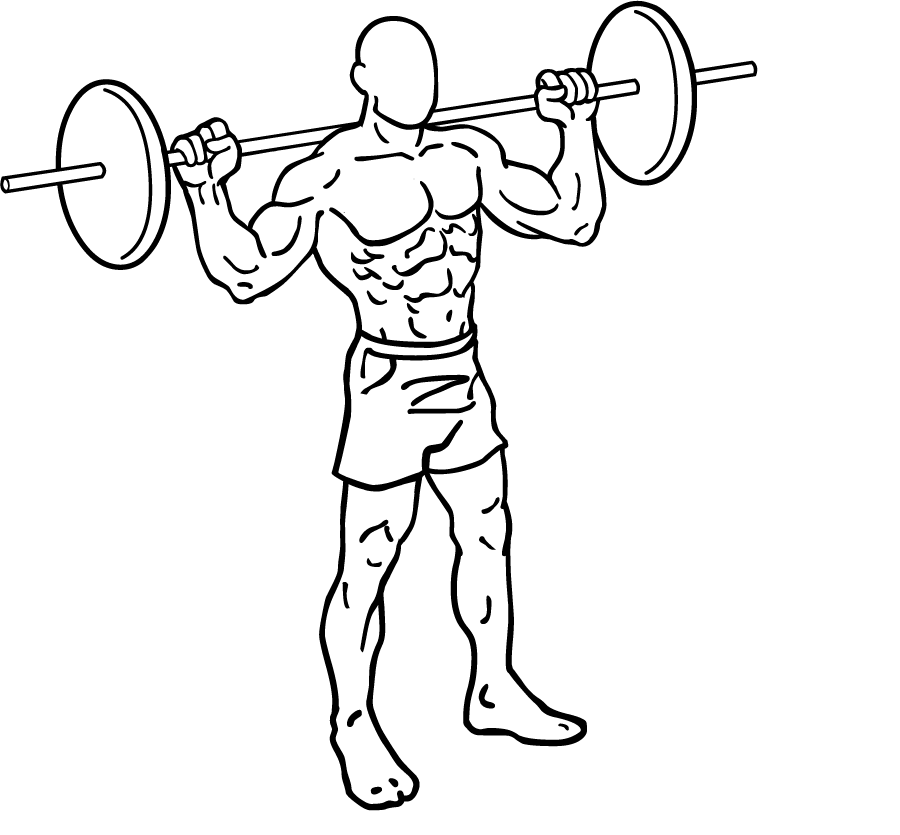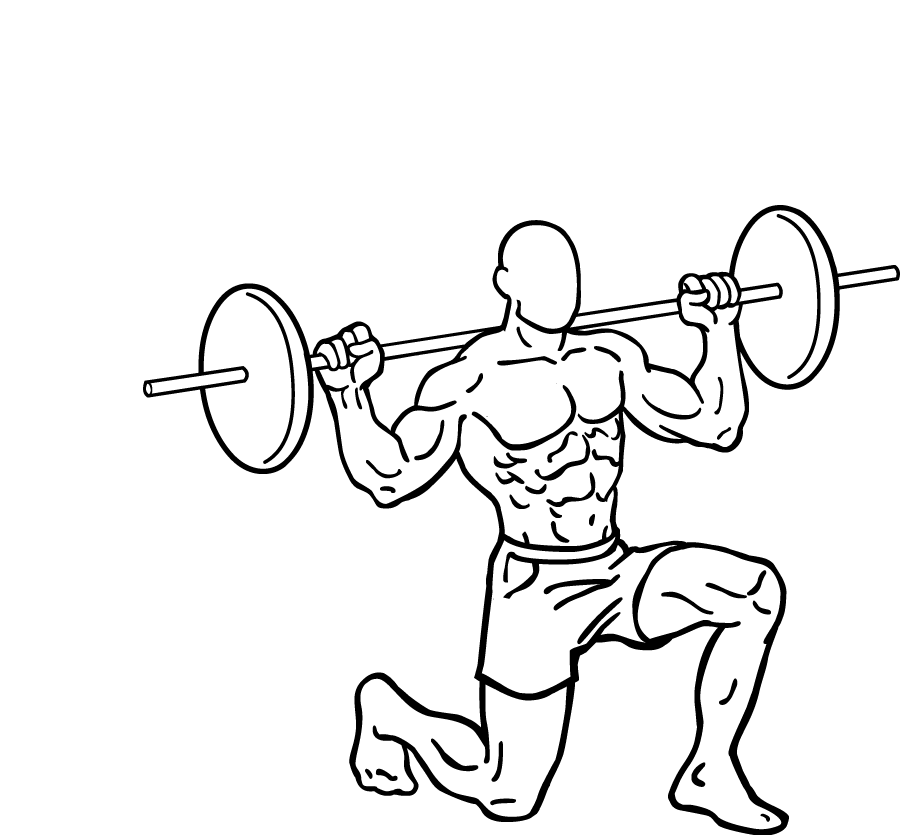Last Updated on September 24, 2014
Barbell lunges are a powerhouse exercise in strength training, often included in routines aimed at building strong, functional legs. This move not only targets the hamstrings, quadriceps, and glutes, but also works the calves, engages the core, and helps improve balance and coordination. Whether you’re a gym novice or a seasoned lifter, adding barbell lunges to your regimen can bring tremendous benefits to your overall strength, mobility, and lower body development.
In this blog, we’ll break down everything you need to know about barbell lunges—from the step-by-step process of performing them correctly to common mistakes and essential tips to get the most out of this exercise.
Why Barbell Lunges?
Barbell lunges are a functional movement that mimics actions like walking, running, and climbing stairs. These activities naturally require leg strength, flexibility, and coordination, all of which barbell lunges improve. But why choose the barbell variation over the more common bodyweight lunge or dumbbell lunge?
- Added resistance: Using a barbell increases the load on your muscles, encouraging more significant strength and muscle growth.
- Balance and stability: Balancing a barbell across your upper back requires more core engagement and body control, challenging your stability.
- Symmetry: Lunges are a unilateral exercise, meaning they work one leg at a time, helping address any imbalances between your right and left sides.
This compound exercise helps build mass and strength in the lower body while also increasing core strength and coordination. Now, let’s dive into how to perform the barbell lunge correctly.
Steps to Perform the Perfect Barbell Lunge
If you’ve never done barbell lunges before, it’s important to start light, or even practice the movement without any weight to perfect your form before loading the bar. Here’s a step-by-step guide on how to perform the exercise properly:
Step 1: Set Up the Barbell
Begin by placing the barbell on a rack at about shoulder height. Approach the bar, ensuring that your feet are shoulder-width apart, and grip the bar slightly wider than shoulder width. Step underneath the bar and position it across your upper back, not directly on your neck. Your hands should be gripping the bar firmly to stabilize it.
Once you’re in position, stand tall and lift the bar off the rack by pushing through your legs, taking one or two small steps back to clear the rack.
Step 2: Establish Your Starting Position
With the barbell resting across your upper back, stand with your feet about 8 inches apart, with toes pointing forward. Engage your core by drawing your abs in and keep your chest lifted and shoulders back. Maintaining this posture throughout the movement is crucial for both safety and effectiveness.
Step 3: Step Forward
Now, step one foot forward, taking a step that’s roughly 2-3 feet long. The length of your step will depend on your height and mobility. A shorter step will emphasize the quadriceps, while a longer step will place more emphasis on the hamstrings and glutes.
While stepping forward, ensure that your upper body remains upright and your core stays engaged. Keep your chest up and avoid leaning forward or arching your back.
Step 4: Lower Your Body
With your front foot planted, lower your body into a lunge by bending both knees. Your back knee should hover just above the floor, but not touch it. The front knee should form a 90-degree angle, and it’s important to ensure that your front knee stays directly above your ankle. This helps prevent unnecessary strain on the knee joint.
Your back leg should also bend to form a 90-degree angle, with your knee pointing down toward the floor. Keep your weight distributed evenly through the front foot (particularly the heel) and the back foot (the toes).
Step 5: Return to Starting Position
After reaching the bottom of the lunge, push through the heel of your front foot and return to a standing position. Bring your back leg forward to meet your front leg. Once you’ve returned to the starting position, repeat the process on the other side.
Performing the movement on both sides completes one repetition. Continue alternating legs for the desired number of reps.
Common Mistakes to Avoid
Like many exercises, barbell lunges are highly effective but can also cause injury if not performed with proper form. Here are some common mistakes to watch out for:
- Letting the front knee extend beyond your toes: Allowing your front knee to push past your toes places unnecessary stress on your knee joint. Always keep your knee directly above your ankle, forming a 90-degree angle in the front leg.
- Not engaging your core: A weak or disengaged core can lead to an arched back or forward-leaning torso, both of which can compromise your form and increase the risk of injury. Always keep your abs tight and your torso upright throughout the movement.
- Stepping too far or too short: If your step is too short, you might overwork your quads and strain your knee. On the other hand, if your step is too long, you may lose balance and strain your hip flexors or lower back. Find a moderate step length that allows both knees to bend at a 90-degree angle.
- Bouncing or rushing the movement: Lunges should be performed in a slow, controlled manner. Bouncing at the bottom or rushing through reps reduces the effectiveness of the exercise and increases the likelihood of poor form or injury.
- Lifting too much weight too soon: Barbell lunges require balance and coordination, so it’s best to master the form with light or no weight before adding heavier loads. Start with an empty bar or a weight that allows you to complete your reps with proper form.
Tips for Optimizing Your Barbell Lunges
Barbell lunges are a versatile exercise, and there are several ways you can optimize or modify them to suit your goals. Here are a few tips to help you get the most out of this exercise:
1. Focus on Time Under Tension
One way to make barbell lunges more challenging is to slow down the lowering (eccentric) phase of the movement. Instead of rushing through the lunge, take 3-4 seconds to lower yourself down, holding at the bottom for an extra second before pushing back up. This increases the time under tension for your muscles, leading to more significant strength gains.
2. Engage Your Core
Since balance is a crucial element of barbell lunges, keeping your core tight and engaged will help stabilize your body and protect your lower back. Think about drawing your belly button toward your spine to keep your core activated throughout the movement.
3. Vary Your Lunge Direction
Barbell lunges are most commonly performed as a forward movement, but you can add variety by stepping in different directions. Try alternating between forward lunges, reverse lunges, and lateral lunges (side lunges) to work your muscles from different angles and improve your overall mobility and strength.
4. Add More Weight Gradually
Once you’ve mastered the movement with lighter weight, you can begin increasing the load. However, it’s important to progress slowly to avoid injury. A good rule of thumb is to add weight in small increments and only increase when you can perform all reps with perfect form.
5. Integrate Into Supersets or Circuits
Barbell lunges can be incorporated into supersets or circuits for an additional cardio element or to add more intensity to your leg day routine. For example, you can pair barbell lunges with squats, deadlifts, or other lower-body exercises to keep your heart rate up and challenge your muscles even further.
The Benefits of Barbell Lunges
Incorporating barbell lunges into your workout routine offers a wide range of benefits, not only for leg strength but for your overall fitness.
- Improved Strength and Muscle Growth: Barbell lunges target major muscle groups in the lower body, making them an excellent exercise for building strength and size in the quads, hamstrings, and glutes.
- Better Balance and Coordination: The unilateral nature of the lunge means you’re working one leg at a time, forcing your body to balance and stabilize, improving coordination and body awareness.
- Injury Prevention: Strengthening the muscles around the knees, hips, and ankles can help protect against injuries, particularly those related to running, jumping, or other dynamic movements.
- Functional Movement: Lunges mimic everyday activities like walking or climbing stairs, making them a functional exercise that helps improve your performance in real-life tasks.
- Increased Core Strength: Balancing a barbell during lunges requires a strong and engaged core, helping you build a more stable midsection.
Mastering the Barbell Lunge
Barbell lunges are an excellent exercise for building lower body strength, improving balance, and enhancing overall athletic performance. By following the proper form and avoiding common mistakes, you can safely and effectively incorporate this movement into your workout routine.
Remember, consistency and progression are key. Start with lighter weights and focus on mastering your form before adding heavier loads. Over time, you’ll notice significant improvements in both strength and stability. Whether your goal is muscle growth, injury prevention, or functional fitness, barbell lunges are a valuable addition to any training plan.


Exercise images by Everkinetic.






